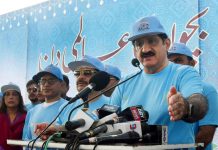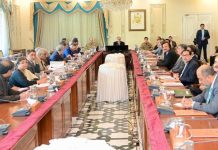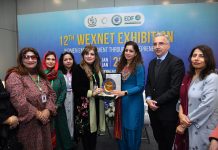
Mubasher Mir
Pakistan is home to one of the largest child populations in the world. According to UNICEF data, there are over 107 million children under age 18 in Pakistan, a demographic scale that is both an opportunity and an immense responsibility for state and society.
Large parts of Pakistan’s child population live in poverty, underserved by basic health, nutrition, education and safe recreation. The most urgent and measurable deprivations include: very high numbers of out-of-school children (millions), widespread childhood malnutrition and stunting, limited access to primary health care and vaccinations in remote/rural areas, and weak child protection for orphaned and abandoned children. International and national reports put the out-of-school figure in the tens of millions (UNICEF/UNESCO estimates vary around ~22–26 million children aged 5–16), making Pakistan one of the countries with the world’s highest absolute number of OOSC (out-of-school children).
Education is the single biggest bottleneck. Recent UNICEF/UNESCO reporting shows that somewhere between 22 and 26 million children aged roughly 5–16 are not attending school, with dropout and non-enrolment concentrated among poorer rural districts, border areas, girls (especially after primary age), and children with disabilities. Learning outcomes are also alarming: many children who are “in school” cannot read or do basic arithmetic at their expected grade.
Gender:
boys make up a sizeable share of OOSC in early grades in some datasets, but girls disproportionately lose access as they age (safety, social norms, household responsibilities, and scarcity of girls’ schools/teachers drive this). Urban areas may have greater formal enrolment but still suffer poor quality and overcrowded classrooms.
Pakistan’s nutrition crisis is deep. The National Nutrition Survey and UNICEF reports identify stunting affecting roughly four in ten children under five (about 40% — roughly 12 million children), along with significant wasting and micronutrient deficiencies (anemia among adolescent girls and mothers is also high). Stunting reflects chronic deprivation — poor maternal nutrition, substandard infant feeding, unsafe water, sanitation and recurrent infection — and has lifelong consequences on cognition, schooling and economic productivity.
Access to basic child health (immunization, acute care, treatment of diarrhea and pneumonia) is uneven: urban middle-class children have much better access than children in remote rural or flood-affected areas, where health facilities are scarce and services intermittently functional.
Estimates cited in national media and UNICEF-based reporting place the number of orphaned children in Pakistan in the millions (commonly cited figures around 4.5 million) — a mix of single-orphan (loss of one parent) and double-orphan cases. Many of these children live with extended family; however, a substantial minority face poverty, exploitation, child labour, inadequate schooling and weak social protection. The government and civil society are still formalizing standards for orphanages and alternative care.
Sports facilities and safe play spaces for children are seriously underdeveloped outside elite urban enclaves. Public investment in school sports, community playgrounds, structured youth programmes, and trained physical-education teachers is minimal. This shortfall harms physical health, socialisation, team skills and protective life skills for vulnerable children. Low investment in extracurriculars also reduces pathways for talent and social mobility from disadvantaged backgrounds.
Public expenditure on education and child services remains low by international standards and is often concentrated at higher education levels rather than basic education and early childhood. Pakistan’s public spending on education has hovered below 2% of GDP in recent years (estimates and analyses for 2023–25 show figures around 1.5–1.9% depending on source and whether provincial+cumulative calculations are used). The Federal Budget documents (and provincial budget briefs) show modest federal allocations for education and children’s services; the bulk of service delivery and budgets sit with provinces — but provinces too underfund primary education, basic health and nutrition programmes relative to needs.
Local governments, which could deliver child-friendly municipal services (safe parks, local centres, sanitation in schools), are frequently underpowered and underfunded; devolution has increased responsibilities but not always the resources.
Urban children often have better physical access to schools, clinics and markets but face crowding, slum-based risks, child labour and pollution. Rural children face longer travel distances to schools and clinics, fewer female teachers, poorer sanitation, and greater poverty. Marginalised groups — brick-kiln children, bonded labourers, seasonal migrants, displaced families from floods — are especially excluded.
The short answer: not enough. While child protection laws, nutrition strategies and education policies exist on paper, child rights do not consistently appear as a sustained political priority for major parties, who prioritise macroeconomic and short-term populist measures. Election manifestos rarely contain detailed, costed plans for universal early childhood care, nutrition, or a rapid scale-up of basic education and community health services. This political gap leads to year-to-year underfunding and fragmented implementation.
State responsibility (what governments must do)
Prioritise child-centred spending. Increase and ring-fence combined federal + provincial spending on basic education, maternal & child nutrition and primary health (aim to restore spending closer to regional norms and international commitments). Strengthen budget tracking so funds for ECE/primary education and nutrition reach schools and health posts.
National push on out-of-school children. A time-bound national strategy to enrol the 20+ million OOSC with conditional cash transfers, flexible schooling (second shifts, community schools), female teacher recruitment and accelerated learning programmes.
Scale nutrition interventions. Expand community nutrition services, growth monitoring, improved maternal nutrition and vitamin supplementation, with emergency scaling in flood-affected zones.
Child protection and standards. Finalize and enforce standards for alternative care, regulate orphanages, and strengthen child protection referral systems in every district.
Invest in schools as community hubs. Use schools for health camps, sports and disaster preparedness — especially in rural and flood-prone districts.
Corporate responsibility
Skills and school partnerships. Corporates must invest in local school upgrades, provide internships and sport-scholarships, and partner on school meals/nutrition programmes.
Workplace policies. Businesses should support parents with flexible hours and child-friendly benefits that reduce child labour pressure.
Disaster resilience funding. Private funds for rebuilding school infrastructure after floods and heatwaves can be catalytic.
Pakistan’s children are simultaneously a vast human-resource potential and a moral test. Current numbers — tens of millions out of school, nearly half of young children affected by chronic malnutrition, and low spending priorities — show structural neglect that will compound inequality and slow development if unchanged. Many policies exist, but the problem is political prioritisation, weak implementation, and fragmented budgets across federal/provincial/local layers. The remedy is not only more money (though that is needed) but better targeting, stronger accountability, and cross-sector political leadership that treats child rights as a national security and economic imperative.
If Pakistan commits now — with transparent budgets, provincial implementation, community ownership and private-sector partnership — it can turn a demographic challenge into a demographic dividend. Children need safe schools, nutritious food, decent health care, places to play and adults who see their protection as non-negotiable. That must be the national project.


























